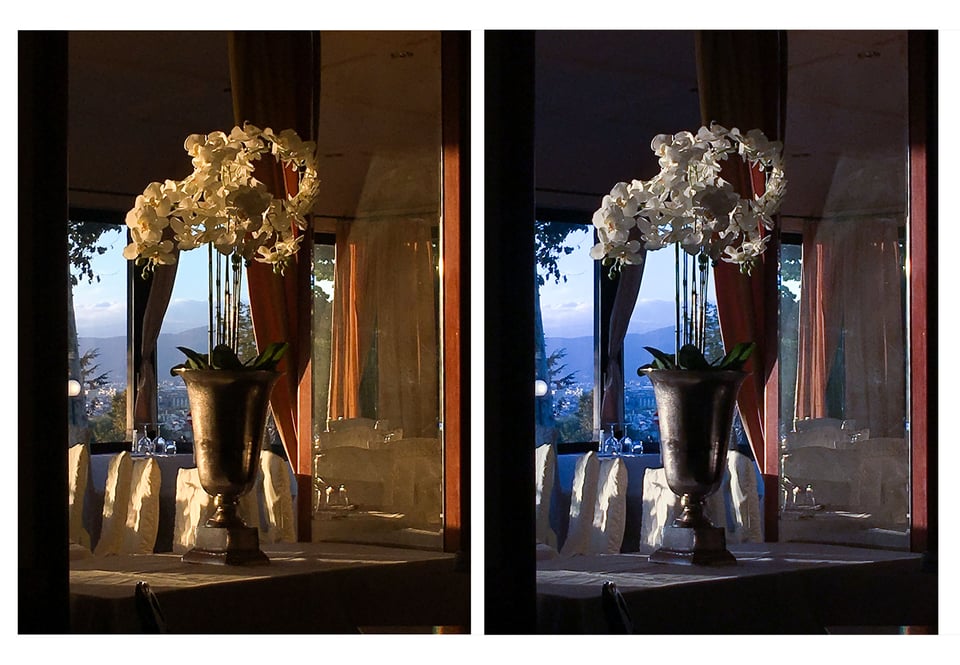However, unless this is the sort of effect you are going for, turning the subject around so that the window light falls on them will tend to greatly improve your indoor images
How to Take Better Photographs Indoors
تقليص
X
-
Problem: My Indoor Photos Are Too Yellow (or Have Other Color Issues)
So far, most of what we’ve talked about involves troubleshooting the dark conditions that are common indoors. But another important factor is the light’s color. Many indoor lights have a very strong color cast that is too yellow or some other color. Other times, you may have multiple different color casts in the image if you are dealing with more than one source of light. Lamps, window lights, overhead lights, etc., tend to have very different color temperatures from one another. The result may be one part of the image that looks very yellow, while a different part looks very blue.

تعليق
-
Solution: Pick one type of light (preferably natural light) and stick to that.
It seems counterintuitive when you’re working in low light conditions, but turning off lamps and overhead lights can actually be the best solution to getting good colors in the image. Stick with one source of light, and you won’t need to worry about different color casts throughout the shot. Either turn off all the lights and just use natural light, or close the curtains and just use one source of artificial light instead.
Dealing with color casts that are too yellow or any other color isn’t that hard on its own. Just make sure you’re shooting in RAW, not JPEG, and you’ll have ample ability to adjust the white balance in post-processing so it looks right. It may even be a one-click edit.
The tricky thing about color casts is when they vary within the same image. When you adjust the white balance to deal with one source of light, the other will grow progressively worse. It can be very difficult and time-consuming to fix this after the fact. The problem can be even worse if you’re adding a flash to the mix, since flashes are generally balanced to a daylight color (though this can be adjusted with flash gels).

تعليق
-
At the end of the day, the key is to do what you can to avoid lighting with mixed color temperatures, because that is the hardest to correct in post-processing. The basic fix is to turn off any lights that don’t match in color temperature. The more complex fix is to buy lightbulbs or flash gels to deliberately balance your sources of light in the first place – perhaps even to balance them with daylight from the window
تعليق
-
Problem: My Indoor Photos Look Bad When I Use Flash
By default, the on-camera flash is basically one very bright, very harsh light coming from about the worst position possible. On top of that, when you use it after dark, the color temperature likely won’t match the color of any ambient light within the room.
تعليق
-
Unless you are making a specific, intentional image with flash, your best bet is to turn off the flash whenever possible. Even if you have to bump up your ISO, that’s better than the harsh “deer in the headlights” look of an unmodified, on-camera flash.
But if you do decide that a flash is necessary for your image, go about using it deliberately. Rather than pointing it head-on toward your subject, see if you can bounce the flash off a large surface like the ceiling or the wall to get a softer appearance. (If you’re using the camera’s pop-up flash that cannot be pointed in any different direction, try a pop-up flash diffuser instead.)
Better yet, get that flash off-camera. Stick it on a lightstand and bounce if off the corner of the room, or stick it in a softbox if you’re going to point it directly at your subject. And if off-camera flash is outside your budget, you can even use a basic cable that allows you to handhold the flash off the hot shoe to get a slightly off-axis look.
Don’t forget that if you are mixing flash with ambient light, you need to make sure your flash matches the color of the ambient light. The easiest way to do this is to add a flash gel that matches the color of your light source. If you are photographing smaller subjects, you may consider using mini LED lights instead of a flash – many of which allow you to change color temperature directly rather than resorting to gels.

تعليق
-
 Conclusion
Conclusion
Photographing indoors presents a number of challenges for photographers. The biggest is that there is usually a lack of light, so you need to be very careful about your camera settings. Other common issues include strange color casts and harsh lighting from an on-camera flash. All of these are things you can fix and deal with, but it’s important to pay attention while you’re taking pictures because not everything can be solved in post-processing.
The tips in this article should start you down the right path and address some of the common issues you may be encountering. Try applying them in practice, and you’ll be well on your way to taking better indoor photographs!
تعليق


تعليق